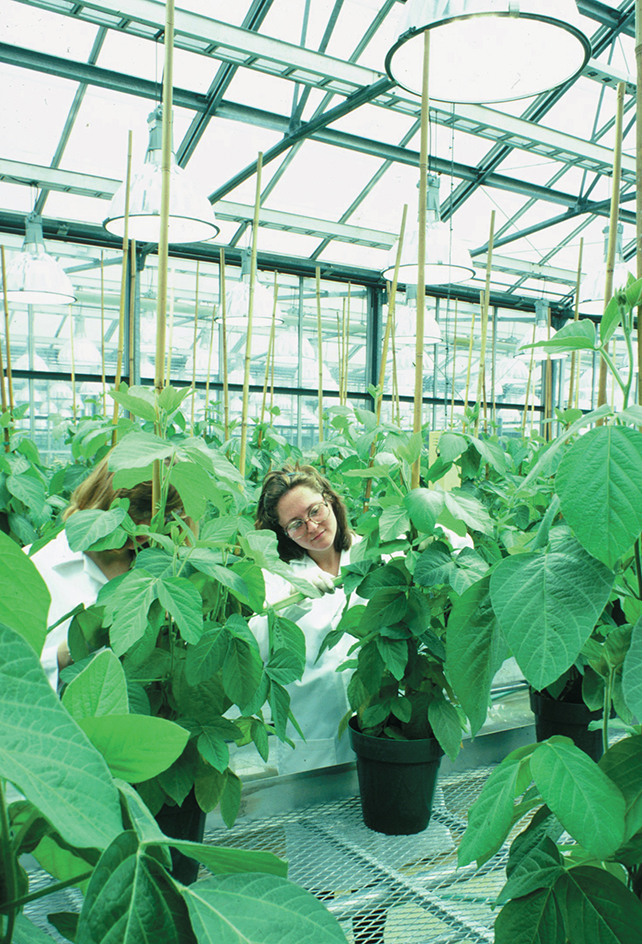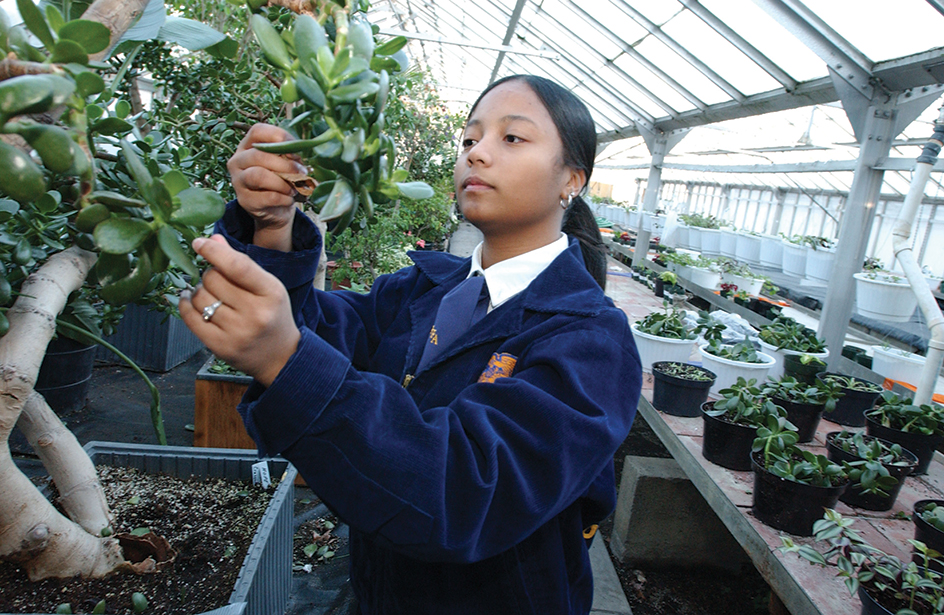Agricultural education is instruction about crop production, livestock management, soil and water conservation, and various other aspects of agriculture. Agricultural education includes instruction in food education, such as nutrition. Agricultural and food education improves the quality of life for all people by helping farmers increase production, conserve resources, and provide nutritious foods.
There are four major fields of agricultural education: (1) elementary agriculture, (2) vocational agriculture, (3) college agriculture, and (4) general-education agriculture. Elementary agriculture is taught in public schools and deals with such subjects as how plants and animals grow and how soil is farmed and conserved. Vocational agriculture trains people for jobs in such areas as production, marketing, and conservation. College agriculture involves training people to teach, conduct research, or provide information to advance the field of agriculture and food science in other ways. General-education agriculture informs the public about food and agriculture.
In the United States
There are three chief sources of agricultural education in the United States. They are (1) high schools, (2) colleges and universities, and (3) youth organizations.
High schools.
Most high school agriculture courses offer both classroom instruction and practical experience. For example, a student might raise a crop or an animal, work on a farm, or work for an agriculture business, such as a machinery dealer. Many schools offer adult education courses to help people improve their production, management, and computer skills.
Colleges and universities
award bachelor’s, master’s, and doctor’s degrees in agriculture. Many colleges and universities offer agricultural education via distance learning over the Internet. Such classes are especially valuable for remote and rural populations.
Land-grant universities
are state schools receive federal aid under legislation that followed the Morrill Act of 1862.This act granted public lands to support agricultural or mechanical education. Land-grant universities have three chief functions: (1) teaching, (2) research, and (3) extension service.
Teaching.
Colleges of agriculture prepare students for careers in all aspects of the food and agriculture system. Some career choices include farming, food science and veterinary science, management, marketing, ranching, social services, and teaching.
Research.
Each land-grant university has an agricultural experiment station equipped with laboratories and experimental farms. There, agricultural scientists work to develop better farming methods, solve the special problems of local farmers, and provide new technology.

Extension service.
The Cooperative Extension System is a partnership of the federal, state, and county governments. This service distributes information gathered by the land-grant universities and the U.S. Department of Agriculture (USDA) to farmers, families, and young people. County extension agents, who work in most counties, train and support volunteer leaders. Agents and volunteers carry out extension programs through the Internet, meetings, newsletters, radio, television, and visits.
Youth programs and organizations
involved in agricultural education include 4-H and FFA (Future Farmers of America). Members of 4-H participate in projects dealing with conservation, food and agriculture, health and safety, and other subjects. The 4-H program in the United States is part of the National Institute of Food and Agriculture (NIFA), an agency within the USDA. 
FFA is an integral part of the program of vocational agriculture in many high schools. Local chapters take field trips and conduct projects to develop leadership, citizenship, patriotism, and excellence in agriculture.
History.
The rapid growth of agricultural education began during the late 1800’s. In 1862, Congress created the Department of Agriculture to gather and distribute agricultural information. The Morrill Act, which provided for the land-grant schools, became law that same year. The Hatch Act of 1887 gave federal funds to establish agricultural experiment stations.
Government support for agricultural education increased during the 1900’s. For example, the Smith-Lever Act of 1914 created what is now the Cooperative Extension System. The Smith-Hughes Act of 1917 and the George-Barden Act of 1946 financed high school instruction in farming. The Vocational Education Act of 1963 funded training in other fields of agriculture.
Agricultural science and education expanded after 1900 in response to a need for more technical knowledge and skill. This development led to the use of modern farming methods that required fewer farmworkers. Another major result of this change was the creation of larger farms and ranches. This development increased the need for more agriculture science and education. In the 2000’s, concern for the environment and the need for sustainable farming have driven agricultural research.
In other countries
Agricultural education in other countries resembles that in the United States. Canada has its own 4-H program. Agriculture and Agri-Food Canada distributes information on new farming methods and maintains experimental farms and research institutions throughout the country. In Australia, each state has several agricultural research stations and an extension service. The United Kingdom and New Zealand have a program of youth clubs called Young Farmers’ Clubs that resemble 4-H. In India, agricultural education is promoted by the Indian Council of Agricultural Research (ICAR).
